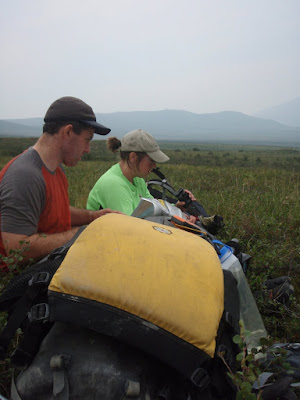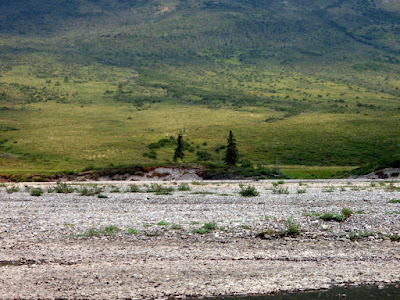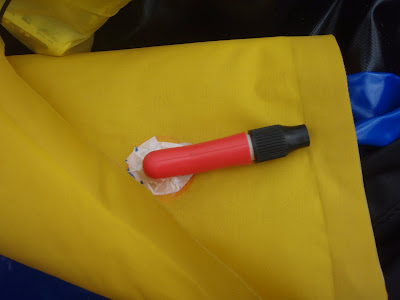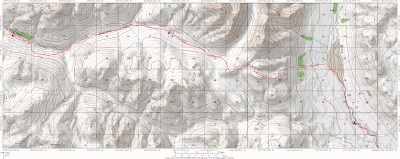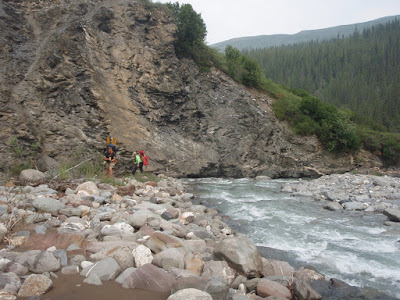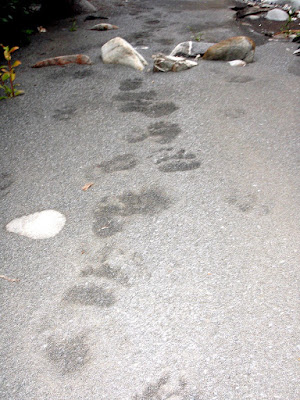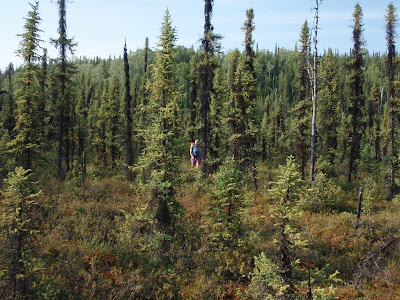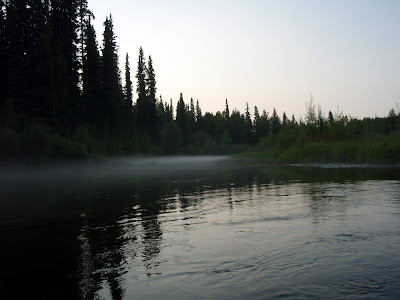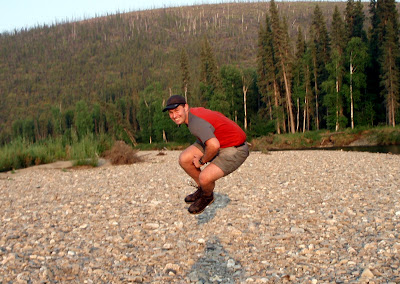Day 6 started and ended on the Tinayguk. We floated from camp, starting with a wonderful little rock garden, and floated for a couple of hours, then stopped for lunch to consume our snack rations. Or more correctly, I consumed my snack rations while others had lunch.
The Tinayguk was quite fun, going from riffle pool to little rock gardens and a fairly mellow canyon section.
We decided to have some practice with the throw bags while stopped for lunch and had some fun with practice tosses.
I had some fun with Marsh’s boat and discovered it is much too small for me. Its hard to imagine, but if I understand it correctly the first packrafts Alpacka make were this size and folks i know who are taller than me still use them for trips.
The lunch break also involved figuring out where we would emerge from the Tinayguk to begin the walk to Wild Lake, our pickup point.
Once we were back on the river we were treated to a very unusual sight – the river was undercutting a hill with permafrost, cutting completely under the bank into a permafrost supported cave. We went around in a side channel. The smoke was starting to move in again, taking the views away. The smoke at times smelt like a very wet campfire, which left us wondering how close the wildfires were. Much later we were to find the closest wildfires were quite far away, on the other side of the Dalton Highway.
After the permafrost cave, we encountered a number of “tussock gardens” were huge clumps of turf and soil had fallen into the river and ran aground. It was a strange sight.
Shortly after the tussock garden we reached our take out point and made camp. The Tinayguk is very recommended!






